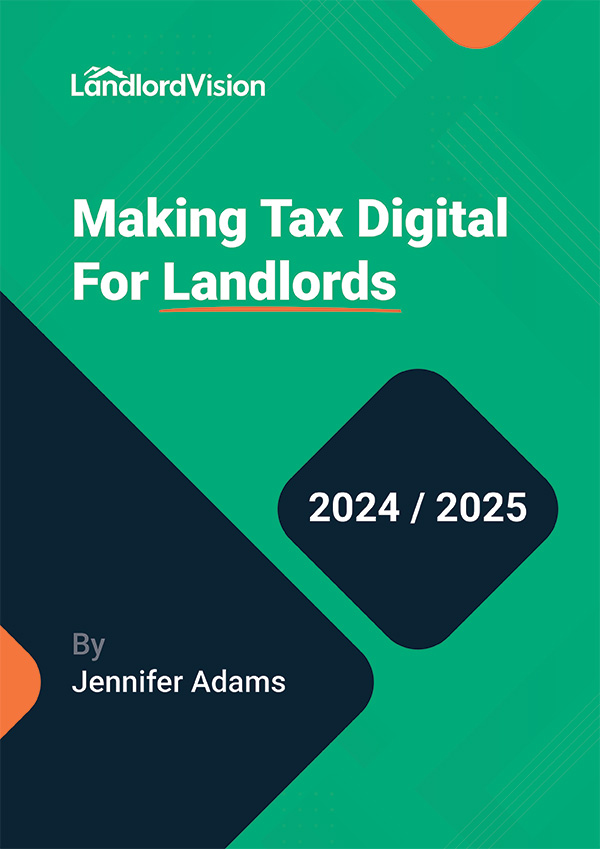
As we all know, anything HMRC-related is guaranteed to have a few (or lots!) of teething problems. In this article we’re looking at how the Making Tax Digital roll-out for VAT registered companies has gone. Read on to find out how this can help individual landlords prepare for the digital switch that’s yet to come.
Making Tax Digital is all part of the government’s big plan to make it easier for businesses and individuals to handle their tax affairs. According to the House of Lords Economic Affairs Committee, it should be motivated by “productivity, efficiency and modernisation reasons rather than just tax compliance”.
And if it’s easier, there will be fewer people defaulting on their tax obligations. At least that’s the idea!
In theory, Making Tax Digital is a good thing for landlords. Because it aims to make tax returns simpler so it should save you time and money. You can streamline your record keeping, have access to real-time tax and VAT information, and minimise mistakes once you switch to a digital MTD compatible bookkeeping system.
So how has the rollout of MTD gone for VAT registered companies, and what can you learn from it?
Making Tax Digital for VAT Background
MTD for VAT was rolled out for VAT registered businesses at the beginning of April this year. Those businesses that were exempt for various reasons were given some respite, but only until October 2019.
HMRC first announced it planned to Make Tax Digital way back in 2015. Fast forward to 2019 and there was a lot of publicity about MTD prior to the rollout for VAT registered businesses. Nevertheless, research carried out between November and December 2018 found that 19% of businesses still hadn’t heard of MTD. Of those that were aware, 43% had been told about Making Tax Digital by their accountant or tax agent; only 33% had learned about MTD via HMRC emails, letters, or announcements on the HMRC website.
Just six says before MTD for VAT, more than one million businesses had yet to register. The first quarterly returns must be submitted by 7 August, so VAT registered companies do still have time to get their houses in order, but it is likely that unless their accountant has been proactive in warning them about Making Tax Digital, they may not have done anything at all and their first tax returns will be a rude awakening.
Implementing MTD for VAT Registered Businesses
One of the biggest concerns facing VAT registered businesses has been how to implement Making Tax Digital, as in many cases, switching to MTD for VAT means buying new software or getting to grips with doing things differently. Of course, landlords with an accountant probably have some help in this regard, but for small landlords who do their own VAT returns, things have been a bit trickier.
The British Chambers of Commerce (BCC) conducted research and discovered that 38% of businesses have had to upgrade or look for new accounting software to make the switch. The BCC also found that many businesses were concerned about the costs associated with new software.
When criticised, HMRC pointed out that there were 220+ software products that businesses could use, which gave VAT registered businesses plenty of options to find a software package that matched their budget and needs.
The estimated cost of putting MTD compliant software in place is around £564 for small VAT registered landlords and £872 for VAT registered landlords with a turnover between £500k and £1m.
The Federation of Small Businesses (FSB) says:
“At a time when small business confidence is in the doldrums – and wages, auto-enrolment contributions and business rates are rising – more costs and admin burdens are the last thing they need. They also have the small matter of Brexit to think about.”
To be fair, they have a point. As well as the switch to MTD, landlords are also being hammered by government taxes and increased legislation.
The Progress to Date of Making Tax Digital for VAT
There is no doubt that the UK’s tax system is needlessly complex. Small businesses have to contend with not just VAT, but also Corporation Tax, business rates, and National Insurance. In addition to the many other pressures faced by landlords, it is no wonder that some are deciding to throw in the towel and sell up.
There has been talk from various politicians calling for all taxes to be consolidated into one, in a bid to help ease the burden on small businesses and entrepreneurs. However, with the legislative agenda focused on other areas at present, it is unlikely to happen any time soon.
Landlords have no choice but to accept the government’s digital tax reforms. There is no point looking for a temporary stop-gap solution in the hope that Making Tax Digital will go away. The government has confirmed that it will “not be mandating MTD for any new taxes or businesses in 2020”, as well as taking “a light touch approach to penalties in the first year of implementation”, despite the brief reprieve MTD will still arrive.
What Can Landlords Learn from the MTD VAT Rollout

Making Tax Digital for VAT went live at the start of April 2019. The first MTD for VAT submission for the period 1 April – 30 June must be filed by 7 August. Digital accounting records must be kept from the beginning of the same period. If you are not VAT-registered, you have a while longer. MTD is no longer mandated for other taxes in 2020, as was originally planned, so you have some breathing space.
This gives you plenty of time to get your finances in order ahead of the first filing date, so you don’t get flustered.
Not all VAT accountants have been fast to react to the MTD changes, meaning they have to struggle last minute to submit clients returns successfully. If you’re using an accountant, make sure you know how they’re preparing for Making Tax Digital. The best course of action, assuming you haven’t heard anything from your accountant, is to give them a call and find out how they plan to help you with MTD. And if you are met with an unsatisfactory answer, consider switching to a more proactive accountant!
Factor in the Extra Costs of Making Tax Digital
For many companies, MTD has meant added costs and administrative burdens, while this will be lessened for individuals, it’s worth considering.
There is a learning curve with any new software, therefore, it’s a good idea to get familiar with any new solutions ahead of the deadline. Using a new software means having to add your data to that software, causing an initial spike in administration time. Because you need software to submit your return, you may have to budget for the extra cost if you use a paid solution or if your provider charges for a Making Tax Digital add-on.
Get Acquainted with MTD Compatible Software
Landlords using Landlord Vision don’t have to worry about expensive upgrades, but if you are still undecided on what software package to use, you are running out of time to get things moving.
Good landlord software can help to reduce costs in other aspects of your business and is often a worthwhile investment, but it’s worth doing the research to find the software that best suits your business set up, and that’s research you don’t want to be doing a week before the deadline. It is best to start using MTD compliant software as soon as possible; don’t wait until two weeks before you need to submit your returns to install it.
Using Landlord Spreadsheets for Making Tax Digital
The government’s idea was for software providers to offer full software solutions, but also bridging software that would allow people to continue using their spreadsheets but then submit the tax details electronically via the bridging software.
This was a vastly underserved market in the VAT rollout. With very few software providers working on bridging software, it has severely limited the number of companies that taxpayers can choose from. If you’re married to your spreadsheets and you’ve got your heart set on bridging software, you may have to start looking for it sooner rather than later. You can read more on bridging software in this freeagent article. QuickBooks is one provider that offers bridging software, but there are probably others, so look around.
Get Familiar with the Digital Record Keeping Rules for MTD
Part of the rules surrounding the new Making Tax Digital system is that landlords must now keep certain digital records. While the details for individuals haven’t been firmed up and are subject to change before the rollout, this government guide explains what digital records VAT customers must now keep.
The majority of landlords are not VAT registered, which gives them a break – one that is sorely needed!
However, even if you are not VAT registered, you can’t afford to rest on your laurels. Start preparing now for the big rollout. Invest in MTD ready software like Landlord Vision. Give yourself lots of time to get used to managing your portfolio digitally. The more comfortable you are with keeping digital records, the easier it will be to transition to MTD when the time comes.



